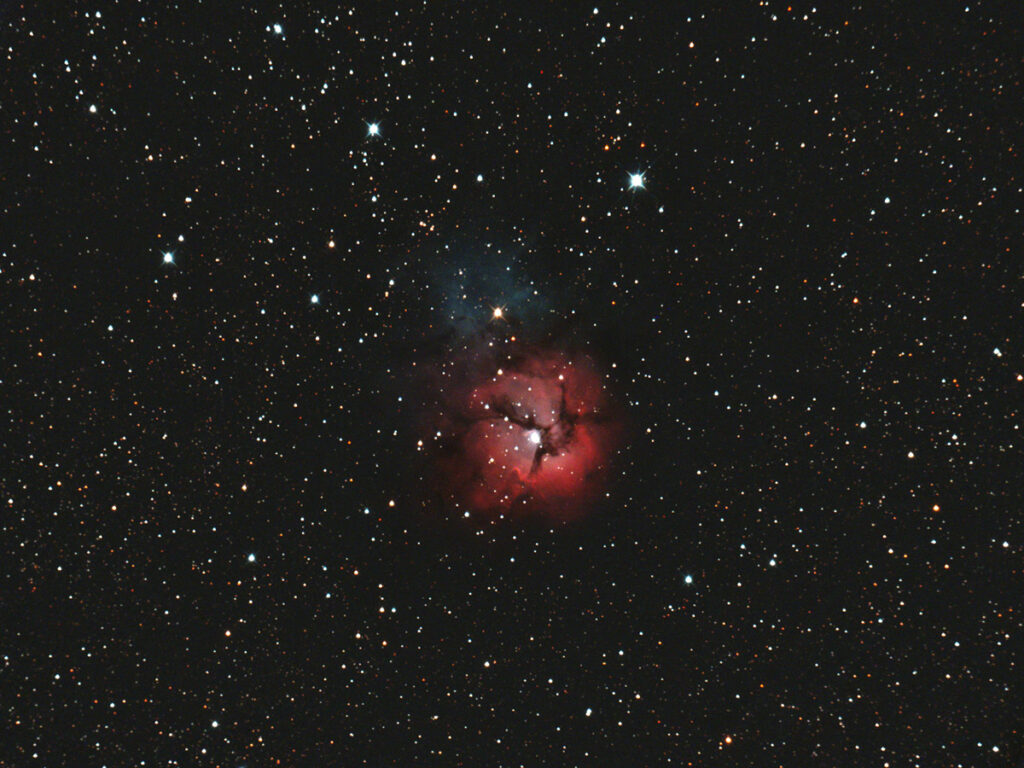
Telescope: Astro-Tech 8” f/8 Ritchey-Chretien, Orion Atlas EQ-G
Camera: Canon EOS Ra, Baader Mk III MPCC
Filter: Orion Imaging Skyglow Filter
Guide scope: Astro-Tech 60mm, Starlight Xpress Super Star, PHD2
Exposure: (30 + 42)x60sec, ISO 800, saved as RAW
Darks: Internal (Long Exposure Noise Reduction On)
Flats: 32×1/25sec, Tee shirt flats taken at dusk
Average Light Pollution: Red zone, Bortle 8, poor transparency, haze
Lensed Sky Quality Meter: 17.5 (8/1) & 18.2 (8/2)
Stacking: Mean with a 1-sigma clip.
White Balance: Nebulosity Automatic
Software: Backyard EOS, Deep Sky Stacker, Nebulosity, Photoshop
M20, the Trifid Nebula in Sagittarius is one of a series of nebula that grace the summer Milky Way. The red is a tenuous cloud of interstellar hydrogen set aglow by stars embedded in it, the blue is dust in the background reflecting starlight, and the dark lanes are vast streamers of dust in the foreground. Being near the Milky Way this field is crowded with faint stars, though the density of stars is uneven. The dark regions show areas of dust blocking the light from the faint distant stars in the background while the brighter regions are relatively clear avenues into the deep galaxy beyond.
The sky hasn’t been particularly transparent, but it’s getting fairly late in the season for imaging objects in Sagittarius from my backyard. To get this image I combined subs taken on two consecutive evenings; August 1st and 2nd. To get as many subs as I could I started taking pictures during twilight so that I could pick the very first image in each set that captured the nebula as twilight ended and continued until the nebula reached the meridian.
M20 is currently well placed in the southwest as the sky darkens.
Recent Comments